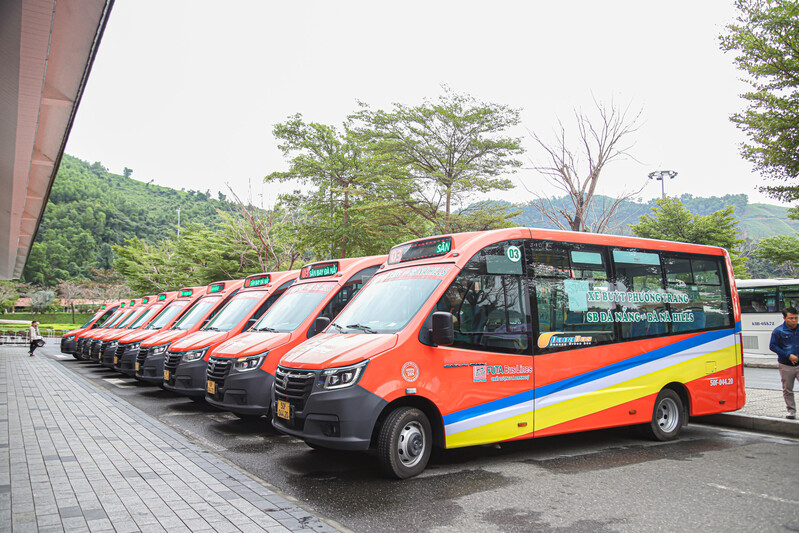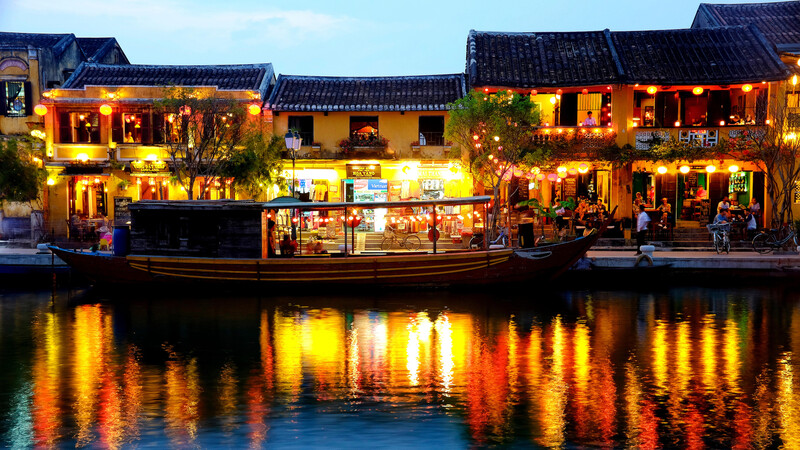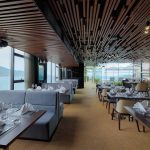The land of “blooming rocks” – Ha Giang, Vietnam, is renowned for its stunning, majestic natural landscapes and is a top tourist destination in Vietnam. So, when is the best time to visit Ha Giang? Let’s find out with VnCarRentals.com.
Table of Contents
HA GIANG – THE LAND OF BLOOMING ROCKS
Located in the Northeast region of Vietnam, Ha Giang is blessed by nature with a diverse ecosystem consisting of forests, mountains, rivers, and a rich cultural heritage. It captivates travelers with famous landmarks such as the Ma Pi Leng Pass, Quan Ba Twin Mountains, Tu San Gorge, Quan Ba Twin Mountains, as well as historic and culturally significant sites like Dong Van Old Quarter and various ethnically diverse villages.
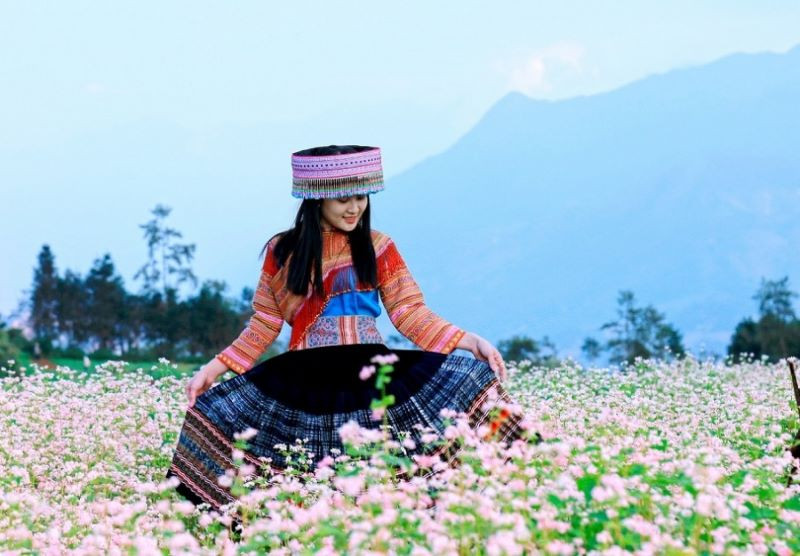
TRAVEL EXPERIENCE IN HA GIANG
Which season is the best for traveling to Ha Giang?
According to the experience of traveling to Ha Giang, each season here offers its own unique beauty and distinctive colors that enchant anyone who visits.
- August – October: This is the time when the golden rice fields are ready for harvest, with the most beautiful rice terraces found in Hoang Su Phi.
- October – November: This is the season of triangular flower fields, so don’t forget to visit the cultural village of Lung Cam – Sung La, the base of Ma Pi Leng Pass, or Thach Son Thanh – Quan Ba to admire the beauty of these flowers.
- December – March of the following year: This is the spring season with an abundance of colorful flowers like mustard flowers, cherry blossoms, and peach blossoms.
- April – July: This is the summer season in Ha Giang, which may bring occasional rain but also offers many breathtaking landscapes for you to admire.
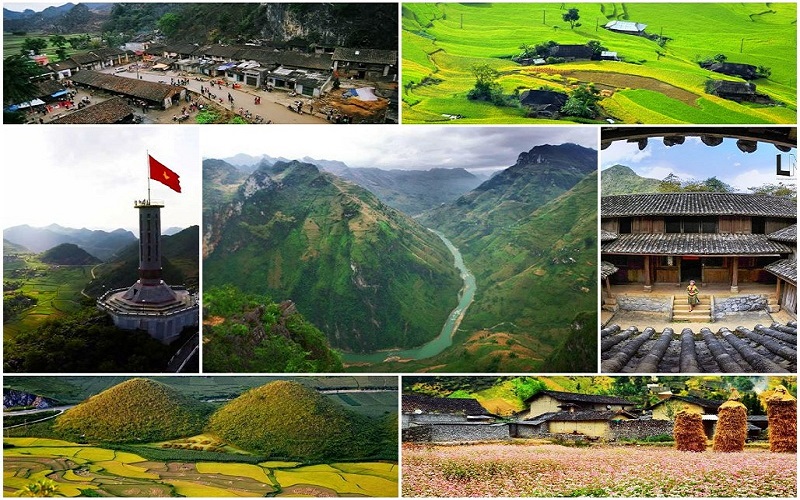
How to get to Ha Giang?
To reach Ha Giang, you must first travel to Hanoi, and from there, you can choose to travel by motorbike or by passenger car to Ha Giang.
You can use the car rental service in Hanoi from VnCarRentals.com, which offers quick and convenient transportation, providing door-to-door service to save you time. Book a car rental service from Hanoi to Ha Giang today for detailed advice.
Once you arrive in Ha Giang, there are two best means of transportation for sightseeing:
- Motorbike: This is the optimal way to explore Ha Giang. You can rent a motorbike in the center of Ha Giang. Make sure to choose a reliable and well-maintained one.
- Taxi or private car: If you are traveling with a larger group, taking a taxi or a private car might be more convenient. There are several taxi companies in Ha Giang to choose from, such as Mai Linh, Ha Giang, Thanh Cong, and the prices are reasonable.
What Beautiful Tourist Attractions Are There in Ha Giang?
Ma Pi Leng Pass
One of the most magnificent and beautiful of the “four great mountain passes” in Vietnam, Ma Pi Leng Pass is a destination that every adventurous traveler wants to conquer. It’s located on the Dong Van – Meo Vac – Ha Giang plateau route, and it’s famous for its majestic landscapes with towering limestone peaks beside the picturesque Nho Que River.
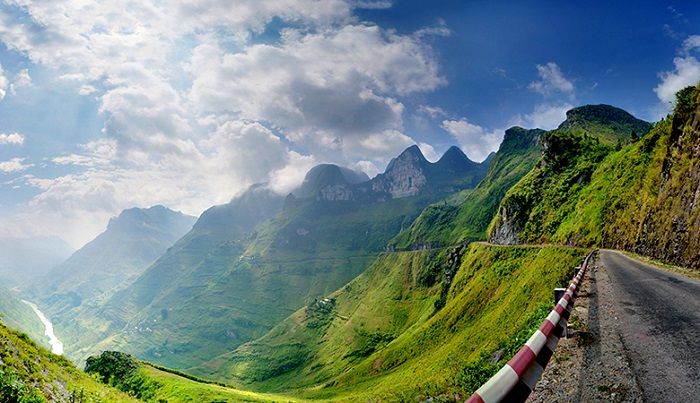
When you visit Ma Pi Leng Pass, you’ll experience the vastness and grandeur of the Ha Giang mountainous region. The winding road, surrounded by lush green valleys and towering mountains, will leave you in awe of its majestic and mystical beauty.
Nho Que River – Tu San Gorge
Your Ha Giang tour will be incomplete without visiting the Nho Que River. When viewed from above, the Nho Que River looks like a ribbon of blue silk, meandering through the majestic landscapes of the Northwest mountainous region, creating a poetic and serene backdrop.
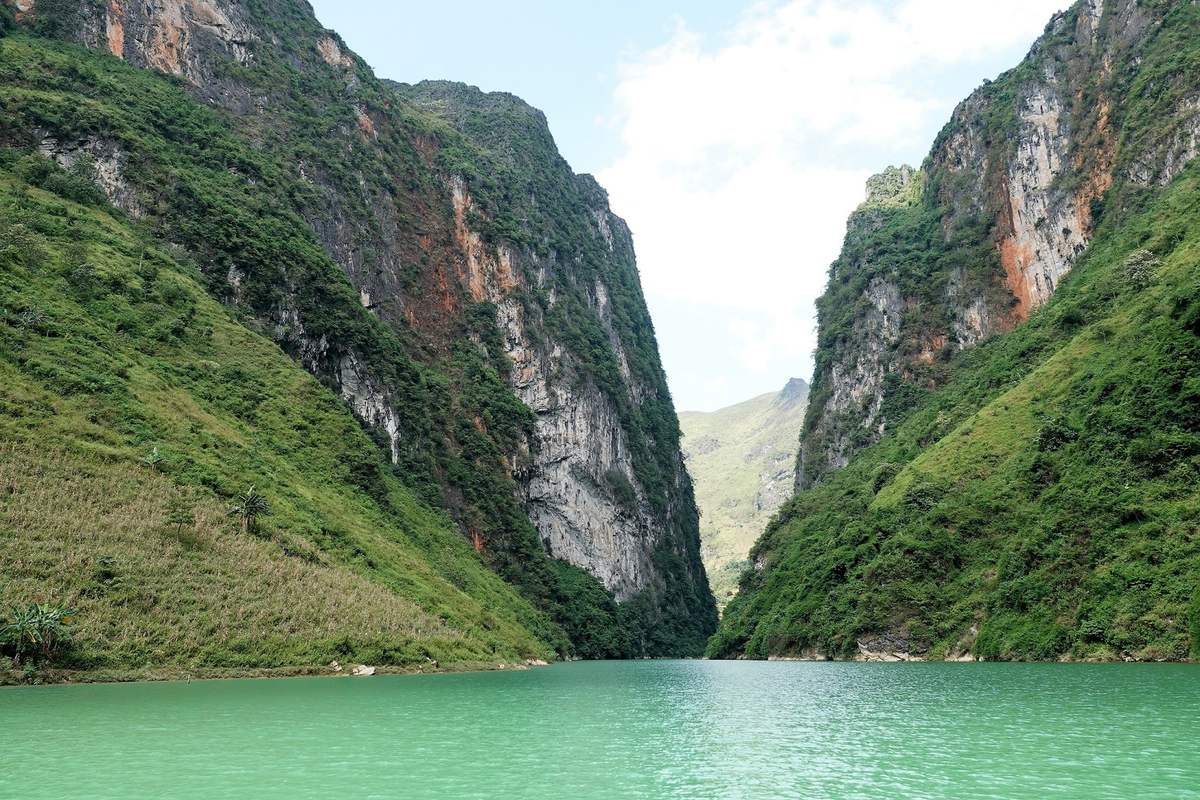
Combine this with the rugged Tu San Gorge, nestled between the stunning Northeastern mountains and the emerald waters of the river. The magnificent Northeastern mountains and the clear blue river create a unique natural painting that will captivate the hearts of travelers.
Dong Van Karst Plateau Geopark
Recognized as a UNESCO Global Geopark since 2010, the Dong Van Karst Plateau is one of the most significant and unique natural destinations in Vietnam. It’s renowned for its rugged and magnificent landscapes, especially the ancient limestone formations that have been shaped over millions of years. These white limestone formations stretch from the valleys to the high mountain peaks, creating a unique contrast between the colors of the rock and the azure sky.
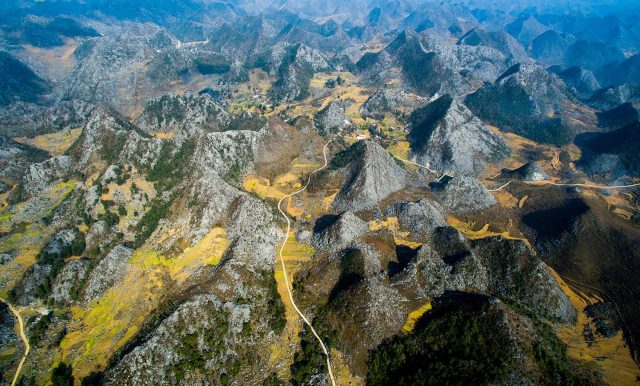
The Dong Van Karst Plateau not only boasts limestone landscapes but also features the distinctive cultures of various ethnic minorities, such as the Hmong, Dao, and Lo Lo, expressed through customs, traditions, and highland heritage.
Quan Ba Heaven’s Gate
Located on Quan Ba Mountain, Quan Ba Heaven’s Gate is an architectural masterpiece with a unique design. It serves as an artistic wonder at the intersection of human creativity and nature, making it an attractive tourist destination in Ha Giang.
Quan Ba Heaven’s Gate is considered the gateway to exploring the Dong Van Karst Plateau. From here, you can admire the complete beauty of the majestic landscapes that blend the earth and sky of Northeastern Vietnam.
WHAT TO EAT WHEN TRAVELING TO HA GIANG?
When you travel to Ha Giang, you’ll have the opportunity to savor a rich and unique local cuisine:
- Rolled Egg Cakes: A specialty of Ha Giang, these soft, meat-filled rolls are served with a delicious dipping sauce.
- Thang Co: A delightful soup made with pork, noodles, and various herbs, often enjoyed with bread.
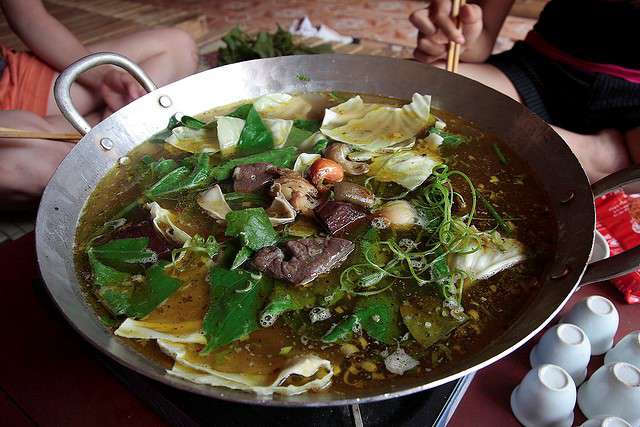
- Quan Ba Noodles: Unique noodles from Ha Giang, served with beef or pork, fresh greens, and a special sauce.
- Smoked Buffalo Meat : A traditional dish of the Northwestern mountainous region, where buffalo meat is marinated and hung over a fire for two months.
- Black Chicken Hotpot: Prepared with black Hmong chicken and an assortment of wild greens, making for an enticing dish.
These are some of the travel experiences in Ha Giang and the best times to visit this northernmost region of Vietnam. We hope you have a fulfilling journey exploring this unique part of the country.
